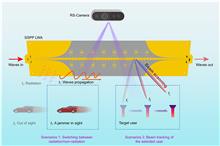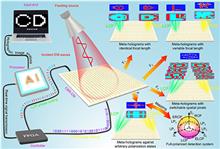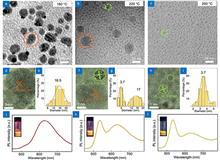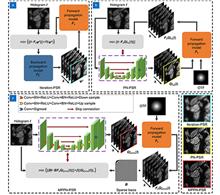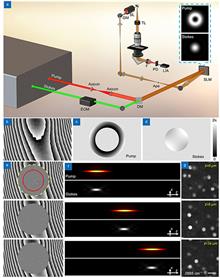 View fulltext
View fulltext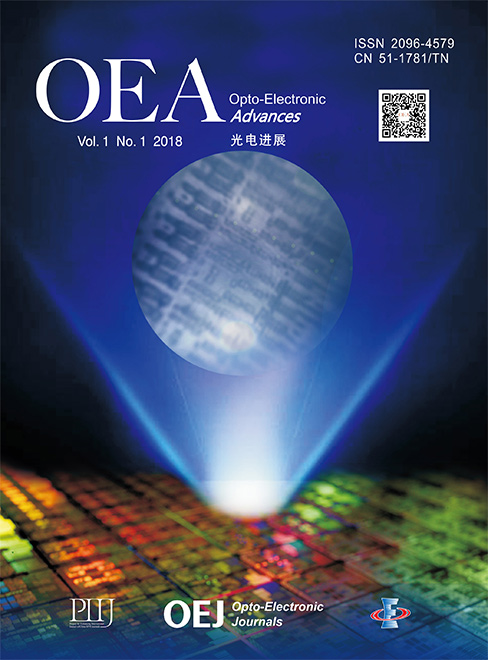
Smart antennas have received great attention for their potentials to enable communication and perception functions at the same time. However, realizing the function synthesis remains an open challenge, and most existing system solutions are limited to narrow operating bands and high complexity and cost. Here, we propose an externally perceivable leaky-wave antenna (LWA) based on spoof surface plasmon polaritons (SSPPs), which can realize adaptive real-time switching between the “radiating” and “non-radiating” states and beam tracking at different frequencies. With the assistance of computer vision, the smart SSPP-LWA is able to detect the external target user or jammer, and intelligently track the target by self-adjusting the operating frequency. The proposed scheme helps to reduce the power consumption through dynamically controlling the radiating state of the antenna, and improve spectrum utilization and avoid spectrum conflicts through intelligently deciding the radiating frequency. On the other hand, it is also helpful for the physical layer communication security through switching the antenna working state according to the presence of the target and target beam tracking in real time. In addition, the proposed smart antenna can be generalized to other metamaterial systems and could be a candidate for synaesthesia integration in future smart antenna systems.
Reprogrammable metasurfaces, which establish a fascinating bridge between physical and information domains, can dynamically control electromagnetic (EM) waves in real time and thus have attracted great attentions from researchers around the world. To control EM waves with an arbitrary polarization state, it is desirable that a complete set of basis states be controlled independently since incident EM waves with an arbitrary polarization state can be decomposed as a linear sum of these basis states. In this work, we present the concept of complete-basis-reprogrammable coding metasurface (CBR-CM) in reflective manners, which can achieve independently dynamic controls over the reflection phases while maintaining the same amplitude for left-handed circularly polarized (LCP) waves and right-handed circularly polarized (RCP) waves. Since LCP and RCP waves together constitute a complete basis set of planar EM waves, dynamically-controlled holograms can be generated under arbitrarily polarized wave incidence. The dynamically reconfigurable meta-particle is implemented to demonstrate the CBR-CM’s robust capability of controlling the longitudinal and transverse positions of holograms under LCP and RCP waves independently. It’s expected that the proposed CBR-CM opens up ways of realizing more sophisticated and advanced devices with multiple independent information channels, which may provide technical assistance for digital EM environment reproduction.
Ag-In-Ga-S (AIGS) quantum dots (QDs) have recently attracted great interests due to the outstanding optical properties and eco-friendly components, which are considered as an alternative replacement for toxic Pb- and Cd-based QDs. However, enormous attention has been paid to how to narrow their broadband spectra, ignoring the application advantages of the broadband emission. In this work, the AIGS QDs with controllable broad green-red dual-emission are first reported, which is achieved through adjusting the size distribution of QDs by controlling the nucleation and growth of AIGS crystals. Resultantly, the AIGS QDs exhibit broad dual-emission at green- and red- band evidenced by photoluminescence (PL) spectra, and the PL relative intensity and peak position can be finely adjusted. Furthermore, the dual-emission is the intrinsic characteristics from the difference in confinement effect of large particles and tiny particles confirmed by temperature-dependent PL spectra. Accordingly, the AIGS QDs (the size consists of 17 nm and 3.7 nm) with 530 nm and 630 nm emission could successfully be synthesized at 220 °C. By combining the blue light-emitting diode (LED) chips and dual-emission AIGS QDs, the constructed white light-emitting devices (WLEDs) exhibit a continuous and broad spectrum like natural sunlight with the Commission Internationale de l’Eclairage (CIE) chromaticity coordinates of (0.33, 0.31), a correlated color temperature (CCT) of 5425 K, color rendering index (CRI) of 90, and luminous efficacy of radiation (LER) of 129 lm/W, which indicates that the AIGS QDs have huge potential for lighting applications.
Digital in-line holographic microscopy (DIHM) is a widely used interference technique for real-time reconstruction of living cells’ morphological information with large space-bandwidth product and compact setup. However, the need for a larger pixel size of detector to improve imaging photosensitivity, field-of-view, and signal-to-noise ratio often leads to the loss of sub-pixel information and limited pixel resolution. Additionally, the twin-image appearing in the reconstruction severely degrades the quality of the reconstructed image. The deep learning (DL) approach has emerged as a powerful tool for phase retrieval in DIHM, effectively addressing these challenges. However, most DL-based strategies are data-driven or end-to-end net approaches, suffering from excessive data dependency and limited generalization ability. Herein, a novel multi-prior physics-enhanced neural network with pixel super-resolution (MPPN-PSR) for phase retrieval of DIHM is proposed. It encapsulates the physical model prior, sparsity prior and deep image prior in an untrained deep neural network. The effectiveness and feasibility of MPPN-PSR are demonstrated by comparing it with other traditional and learning-based phase retrieval methods. With the capabilities of pixel super-resolution, twin-image elimination and high-throughput jointly from a single-shot intensity measurement, the proposed DIHM approach is expected to be widely adopted in biomedical workflow and industrial measurement.
We report a novel stimulated Raman scattering (SRS) microscopy technique featuring phase-controlled light focusing and aberration corrections for rapid, deep tissue 3D chemical imaging with subcellular resolution. To accomplish phase-controlled SRS (PC-SRS), we utilize a single spatial light modulator to electronically tune the axial positioning of both the shortened-length Bessel pump and the focused Gaussian Stokes beams, enabling z-scanning-free optical sectioning in the sample. By incorporating Zernike polynomials into the phase patterns, we simultaneously correct the system aberrations at two separate wavelengths (~240 nm difference), achieving a ~3-fold enhancement in signal-to-noise ratio over the uncorrected imaging system. PC-SRS provides >2-fold improvement in imaging depth in various samples (e.g., polystyrene bead phantoms, porcine brain tissue) as well as achieves SRS 3D imaging speed of ~13 Hz per volume for real-time monitoring of Brownian motion of polymer beads in water, superior to conventional point-scanning SRS 3D imaging. We further utilize PC-SRS to observe the metabolic activities of the entire tumor liver in living zebrafish in cell-silent region, unraveling the upregulated metabolism in liver tumor compared to normal liver. This work shows that PC-SRS provides unprecedented insights into morpho-chemistry, metabolic and dynamic functioning of live cells and tissue in real-time at the subcellular level.
Incorporating polarization in computer vision tasks provides new solutions to high-level analytics, in particular when coupled with machine learning frameworks such as convolutional neural networks (CNN). A recent review in Opto-Electronic Science reports on the developments in data-driven polarimetric imaging, including polarimetric descattering, 3D imaging, reflection removal, target detection and biomedical imaging. The review carefully analyzes these new trends with their advantages and disadvantages, and provides a general insight for future research and development.







